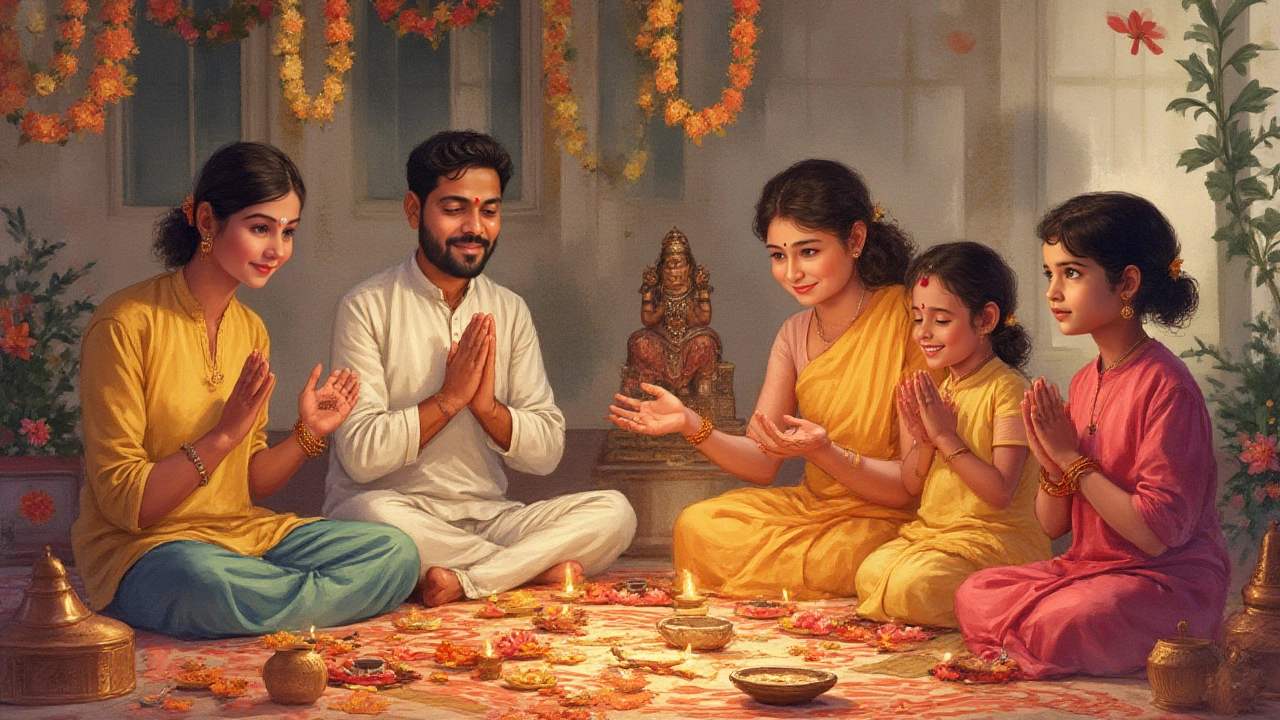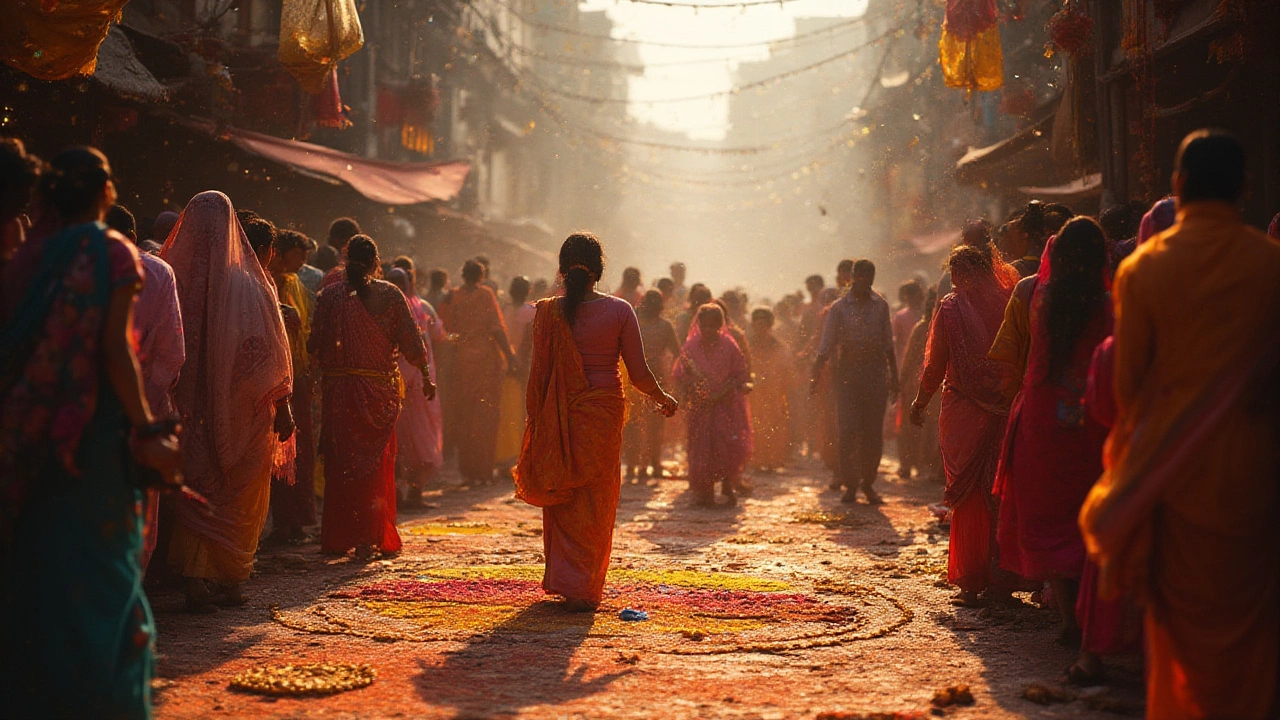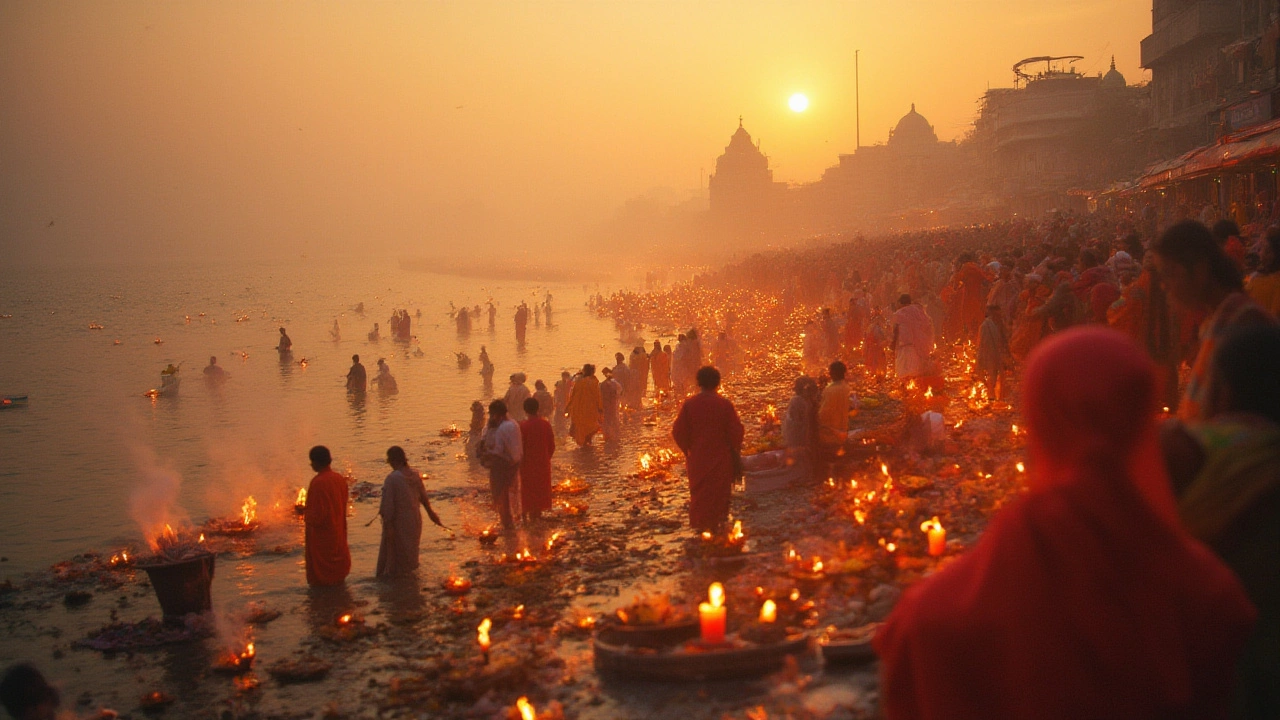India’s sacred rituals don’t just belong in old temples or textbooks. They shape mornings in small villages, guide hectic city festivals, and even sneak into everyday routines like lighting a lamp or tying a thread around a wrist. These rituals aren’t stuck in the past—they pulse with life, weaving stories into dinners, weddings, and even cricket matches. Rituals in India aren’t just performed, they’re lived, with every region, religion, and community putting its own spin on age-old customs. Did you know that India clocks about two million weddings a year, most of them packed with rituals that mix fire, flowers, and food? There’s a reason so many visitors end up with their jaws on the ground, eyes wide as they watch priests bathe statues or families scatter ashes into rivers at dawn. Sacred doesn’t have to mean distant or untouchable. It can be as simple as folding your hands and as grand as bathing an elephant before a festival.
Puja: The Heartbeat of Indian Devotion
Ask any Indian, from a chai seller in Kanpur to a startup CEO in Bengaluru, about the word "puja" and you’ll probably get a smile followed by a story. At its core, puja is worship. But in India, it's rarely a solitary affair or a stiff, formal ritual. It’s as flexible as it is sacred. Puja happens in grand marble temples, but also on cramped kitchen shelves. Some take just two minutes—light a lamp, ring a bell, offer a marigold. Others, like the elaborate Durga or Ganesh pujas, are week-long block parties complete with drums, feasts, and plenty of neon fairy lights.
The reason puja feels so personal is that anyone can do it. Kids join their parents to break a coconut before an exam. Shopkeepers do it to bless their accounts at the start of the new financial year. Farmers decorate their ploughs with flowers before harvest, offering a puja for a good yield. There’s no single way to do it. Some follow long Sanskrit chants learned from grandparents; others just whisper a hope or desire to their favorite deity. All the senses are in play: incense for smell, food for taste, flowers for sight, bells for sound, touch through mudras or pressing palms together.
Here’s a quirky fact: India uses almost 8 million tons of flowers every year, most of it for sacred rituals of India like pujas. Some temples and holy sites have recycling schemes to turn used flowers into incense or natural dyes, showing how old customs adapt with the times.
If you ever get invited to a home puja, just follow your host’s lead. Shoes off, hands clean, show up on time, and try at least a nibble of the sweet offered (called prasad). Don’t worry if it’s new to you—hosts expect questions and love explaining why they do what they do.
Festivals and Community Rituals: When Rituals Turn Into a Carnival
If you want to see Indian rituals go from quiet devotion to full-blown mayhem, visit during any major festival. The Indian calendar is packed: Diwali, Holi, Eid, Christmas, Pongal, Gurpurab, Navratri, Onam—the list is wild and never-ending. Festivals in India don’t just last an afternoon; some stretch for days, even weeks. Usually, they start with prayers or temple visits but quickly morph into street processions, neighborhood cookouts, and massive public feasts.
Take Diwali, the festival of lights. Preparation begins weeks ahead, with people cleaning houses top-to-bottom, buying new clothes, and stringing up thousands of fairy lights. On Diwali night, a special Lakshmi puja takes place at sunset, praying for prosperity. Families light rows of diyas (oil lamps), offer sweets, and set off fireworks that turn the sky into a pulsing disco. The real joy? It’s almost impossible to feel alone during Diwali. Neighbors drop by, old friends call, and even the grumpiest uncle can’t resist an extra samosa. Firecrackers are technically banned in many cities now due to pollution, but you’ll still hear them pop late into the night, showing how ritual adapts but never quite disappears.
Holi, known as the festival of colors, takes sacred ritual into pure playfulness. It’s rooted in stories about Krishna and the triumph of good over evil, but most remember Holi for its wild color-splattered street parties. People douse each other with colored powders and water, breaking social barriers for a day. Don’t be surprised if strangers drag you into a group dance or hand you a sweet lassi. The morning often begins with a small puja thanking the gods for spring, but by noon, it’s nothing short of organized chaos.
Community rituals ramp up during regional festivals too. In Kerala’s Onam, boat races on the backwaters become the stuff of legend. In Punjab, Sikhs line up to stir massive pots of langar—a free meal served to thousands, regardless of faith or background. Even modern Indian cities with glass office blocks fill up with flower carpets, kites, and pandals (temporary shrines). Festivals are the time ordinary rituals go public and magnetic, drawing everyone into the swirl.
Here’s a fun tip: during Indian festivals, don’t plan strict itineraries. Unexpected invites, road closures, and parade detours are the rule, not the exception. The point is to surrender to the moment, share a meal, trade a sweet, and maybe make a new friend or two.

Life’s Crossroads: Birth, Marriage, and Death Rituals
Sacred rituals in India shine brightest at life’s milestones. From the moment a baby’s born to the final farewell, every step comes wrapped in traditions designed to bless, protect, or honor. Take birth, for instance. Many Hindu families hold a naamkaran (naming ceremony) a few weeks after birth, where elders whisper the baby’s name in their ear. The tiny tot often gets a symbolic dab of kajal for good luck, or a thread tied around their wrist to keep away the evil eye. In Sikh and Muslim families, prayers and blessings are woven into the naming too, each with its own scriptural twists.
Weddings, though, are the showstoppers. Indian weddings can last anywhere from three to eight days and pull in rituals from astrology, local customs, and faith. The Hindu saat phere—the seven circles around a sacred flame—symbolizes vows of loyalty and friendship. South Indian couples tie the mangalsutra, a beaded necklace, much like wedding rings in the West. In Muslim nikahs, the couple signs a contract in front of witnesses, with prayers for prosperity and unity. Common across faiths? Dancing, feasting, and enough photos to break your phone’s memory. And don’t even get started on the sheer number of guests; a wedding in Uttar Pradesh set a record with 150,000 invitees. That’s half the size of most small towns in the UK!
Death marks another transition, and rituals here blend grief with hope. Hindu families light a lamp, chant mantras, and often immerse the ashes in a holy river, usually the Ganges. Some communities hire professional mourners to sing or cry, helping families let go. In Parsi families, bodies are placed in the Tower of Silence to be returned to nature by vultures—a rare but continuing practice in Mumbai today. Christians hold midnight masses, and Muslims read prayers from the Quran. These moments, while heavy, pull families together, allowing everyone to remember, share, and slowly heal. What’s striking is that people from totally different backgrounds will often join in—neighbors dropping by with food, friends sitting quietly just to show support. Death in India is communal, never just private sorrow.
| Event | Hindu | Muslim | Sikh | Christian |
|---|---|---|---|---|
| Birth | Naamkaran, Kajal application | Aqiqah, Adhan in ear | Naming at Gurdwara | Baptism |
| Marriage | Saat Phere, Mangalsutra | Nikah, Mehr | Anand Karaj | Church Wedding |
| Death | Antyesti, Ash immersion | Janazah prayer | Kirtan, Ardaas | Funeral Mass |
Tip for travelers: If you’re attending a birth, wedding, or funeral ritual in India, watch, listen, and ask questions. Most hosts love sharing the meaning behind every gesture, and your curiosity is treated as respect, not intrusiveness.
Nature and Elements: When Stone, River, and Fire Become Sacred
It’s not just people and gods that get attention in Indian rituals. Nature gets its due too—sometimes even more so. Rivers are considered living goddesses, trees are tied with prayer threads, and mountains are circled as acts of devotion. The Ganges stands out. It’s not just a river, it’s a place to wash away sins, celebrate festivals, or send loved ones off after death. Over 20,000 pilgrims bathe every day in Varanasi’s ghats, and during big festivals, that number explodes to millions. Scientists have clocked bizarrely high levels of dissolved oxygen in the Ganges, something locals have always called its "self-purifying power." Ritual or not, that’s a mind-bender for any biologist.
Elements like fire, water, earth, and wind show up in rituals big and small. The sacred fire at weddings isn’t just a backdrop—it’s a witness to vows and a symbol of purity. At the Kumbh Mela, the largest religious gathering on Earth (the last one attracted over 50 million people in 55 days), devotees bathe at the confluence of the Ganges, Yamuna, and mythical Saraswati. Practically anything—stones, peepal and banyan trees, sacred cows—can become part of the ritual landscape. Many families keep a "tulsi plant" in the courtyard, watering it daily while whispering a morning prayer. It’s not superstition but a living expression of gratitude to the natural world.
Temple architecture also tells the story. Some temples are built to align perfectly with sunrise or solstice points. Sun temples in Odisha and Gujarat draw thousands during specific equinoxes, when rising light floods the inner sanctum. At the Jagannath temple in Puri, the flag atop the spire always flaps against the wind—try as you might, there’s no logical explanation. Every detail—doorway, stone, or bell—serves a ritual purpose, believed to focus the mind or direct energy.
Tourist tip: Don’t miss an early morning aarti (ritual offering of fire and sound) on the banks of a holy river. Stand quietly, watch the patterns, smell the incense, and you’ll get a front-row seat to a sacred drama that hasn’t changed in centuries. Phones can’t capture the magic—sometimes, you have to be there, wholly present.

Daily Rituals: How Sacred Traditions Stay Alive in Modern India
Here’s the crazy part: not all sacred rituals in India involve huge crowds, fancy outfits, or even religion. Some rituals are so woven into daily life that people do them half-awake, before their first cup of chai. Lighting a lamp at dusk isn’t just for priests—it’s done by millions, signaling a shift from work to rest. Women draw rangoli (colorful designs) at their doorstep every morning, welcoming luck and keeping out the bad vibes. Even businessmen take a moment to bless their new pens, computers, or office chairs at the start of the year. There’s a ritual for opening a new shop, buying a car, or celebrating the family’s pet cow’s first birthday (no joke—rural India loves honoring its cattle!).
Traditional rituals have gotten a tech makeover as well. Livestreamed temple aartis draw viewers globally, especially among NRIs (non-resident Indians) who miss home. Weddings are beamed live on YouTube. Horoscope apps offer online pujas where a priest chants your requests in a far-off temple (sometimes with a WhatsApp video as proof!). Even dating apps these days have filters for astrological compatibility—a sign that modern life and old customs aren’t enemies, just old friends in new outfits.
Many urban Indians blend rituals from different backgrounds. You’ll find apartment societies hosting Christmas tree contests, Eid potlucks, and Ganesh processions, all on the same street. Local clubs organize environment-friendly festivals, swapping plastic for flowers, and turning immersion ceremonies into mass tree-planting drives. It’s less about strict rules, more about shared joy and marking time together.
If you want a taste at home, start simple: light a candle in the evening, say thanks for the day, and maybe try making a small rangoli out of rice powder. It’s not about copying traditions exactly, but catching a bit of that Indian spirit—finding the sacred in the daily grind and sharing it with others.
So next time you see someone tying a thread, ringing a bell, or dancing around a bonfire, remember—it’s not just ritual for the sake of ritual. It’s a living, breathing way to stay connected. To the sacred, yes. But also to each other.
